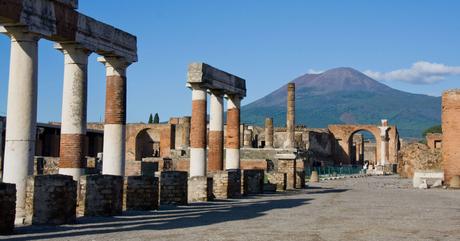Pompeii can be classified as one of the greatest discoveries in the modern world, but where does the history of the excavation begin? Pompeii was an ancient Roman city in Naples that sat proudly on the base of Mount Vesuvius. In 79AD when Pompeii and surrounding cities were buried under a layer of volcanic ash, it had been abandoned by its residents and was not disturbed until over a thousand years later during the Renaissance period.
Who discovered Pompeii?
The origins of the discovery at Pompeii can be traced back to the 16th century when architect Domenico Fontana came across the ruins by accident. Around this time, the city was dug up in a haphazard manner which left it exposed for treasure hunters on the lookout for prized artifacts. Fontana re-buried what he had found as consistent with the conservative beliefs of his time, the erotic frescoes found at the site were deemed not appropriate enough to require a full excavation. It wasn’t until the mid 1800’s that archaeologist Giuseppe Fiorelli took over the site and a more systematic method of organising the site occurred. It was Fiorelli who also had the idea of pouring plaster into the cast of the bodies that had played victim to the fateful eruption.
Who is excavating the site today?
Pompeii has been opened for viewing to the public from the 18th century, however excavations of the mass site are being undertaken today. Important discoveries have still been found which has allowed historians to piece together the story of ancient Roman everyday life. The site has been sectioned into 9 regions and as a project permitted by the government, the ‘Pompeii Project’, the main aim of archaeological work at the ruins have been mainly to restore and preserve the original framework of the city. Major finds are more common nowadays due to the advanced technology imperative in preserving the site. Due to the fragility of the site and its exposure to the elements, it has changed the perspective of scholars who work on the site. The focus now is to conserve the site, meaning that the excavations are smaller in nature.
What can be seen at Pompeii?
Many are surprised by the sheer size of the site, which takes a full day to explore if you really want to immerse yourself in the history of Pompeii. Imposing amphitheaters, houses that belonged to the wealthy, Roman baths and statues are just some of the artifacts and attractions at Pompeii that can be thoroughly explored by the curious visitor. Brilliant frescoes and mosaics showcasing vibrant scenes of the pleasures of life in this era can still be viewed today at the many villas in the area. Perhaps the most famous of all the artefacts found, are the replica casts of men, women and children who didn’t survive the initial blasts. Most of these casts can be found in the Antiquarium which we recommend visiting, and the National Museum in Naples which houses a majority of the artefacts found at Pompeii.
Advertisements

